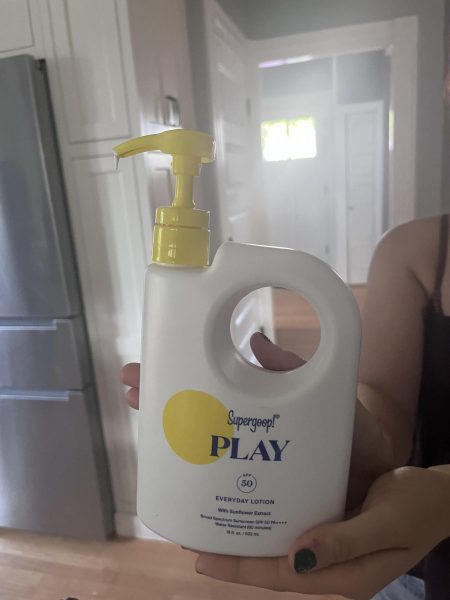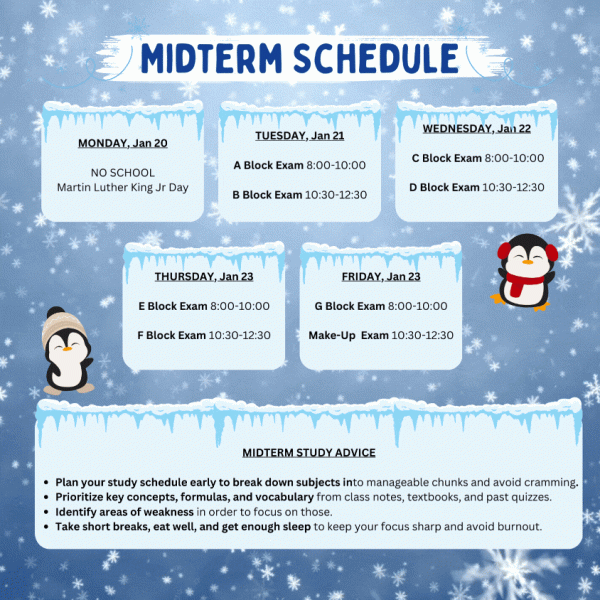Mental Health at HWRHS
Walking in to the HWRHS School Counseling Department, students and faculty are greeted by an introduction to the School Counseling Department.
We all know about the importance of mental health, especially in teens. It has been reiterated time and time again, along with words of criticism from adults and peers alike such as, “It’s your phone,” “You’re faking it,” and, “Just smile more.” But the truth is, the only ones who truly understand what it’s like to be a teen are teens. The ups and downs students face every day are reflected in their mental health and we recognize and acknowledge all aspects of students’ minds.
What Do Students Know?
I asked the students of the Regional to define the term “mental health.” In an impressive result, nearly every student put together the words “emotional and psychological wellbeing” at some point in their answer. Many people also cited one’s surroundings and interactions as key components of the state of their mental health. The CDC has a definition for mental health on their website, stating, “Mental health includes our emotional, psychological, and social well-being.” That so many students could identify the definition is a testament to the school’s mental health education.
How Do Students Spend Their Time?
When listing the amount of time they spend on certain things per week; homework had the most responses for the highest option available: 14+ hours. The next closest part of students’ lives that they spent 14+ hours on a week was family, but homework was listed 150% more frequently. In fact, it was the only piece of data from the question that skewed towards higher amounts of time. Sports, friends, family, clubs and extracurricular activities, and social media were all shown to be taking lower priority to homework.

Social media isn’t taking priority in students’ lives overall, either. While TikTok was the app most students used by far, Google Classroom was listed as their most used app by 2.5 times more frequently than Instagram. One student even shared that while TikTok used to be their most used app, they realized that it was taking up too much time and took the initiative to delete it. When asked how much time they spend on social media per week, the average student spent between two and three hours a week on social media, less than their time spent on many other aspects of their lives, such as homework and family.
What Do Students Do?
Taking a break should be a critical part of everyone’s routine. When asked what they liked to do to destress, more than 80% of respondents said they liked listening to music. Hanging out with friends came in second with 66% of students, followed closely by watching a movie (63%). The next two most frequently used ways to destress were exercising and going for a walk. These were followed by reading a book and writing, meditation, drawing, and then yoga. All of these are healthy ways to unwind, and ones that it is encouraged you try out next time you need to take a break.
What is the part of your life that makes you feel the happiest? 88% of respondents replied hanging out with friends, while 44% said being with family. This is compared to the nearly 30% who enjoyed being alone. Ignoring the difference in numbers, it really depends on the person. What works for some people might not work for others. Other answers to the question were sports (48%), hobbies (44%), and clubs and extracurriculars (22%). Social media had the fewest respondents, though students who wrote in their own answers included activities (watching videos and reading comics). One respondent included a collection of small, feel-good things that made them feel happy: “When teachers praise you, and it is genuine, pets actually showing that they love their owners, when the song you were thinking about magically starts playing by chance on the radio, when good things happen in tv shows that you’re invested in, seeing friends’ progress in life, when friends show they trust you.” The response was a reminder of a quote by Arthur Conan Doyle, who once said, “It has long been an axiom of mine that the little things are infinitely the most important.”
What Are Some Solutions That Could Be Implemented at HWRHS?
I put together a list of options that students may be interested in participating in if they were available at school. A required mask break was a trendy option, with 90% of respondents wanting one. Other options that more than half of the students wanted included yoga (51%), a relaxing space in the school to take a break during powerblock (72%), and mindful minutes (58%).
A number of students took the time to suggest their solutions that could be used to help reduce stress and make them feel more supported at school. Less homework was suggested numerous times, but some were more specific- having the teachers talk more with each other to ensure they didn’t all give homework on the same day, decreasing the amount of homework given at the end of the quarter (a time when homework tends to be piled on), and making sure homework given is actually necessary (not just busywork). Multiple students suggested no midterms, but one student specified that they would rather do a project or other assignment instead of putting students in a silent room and taking a two-hour test on everything they have learned in the past few months, perhaps a more accurate assessment of students’ abilities. Another student recommended making tests weighted less in overall grades, and many others asked for a clearer schedule for how long quarters last and what happens during each of those quarters (sports games, musicals, and planned volunteer opportunities). Respondents also wanted to be understood: they asked for more information on mental health and tips on time management in advisory.
Many students hoped that teachers would start taking students’ situations and stress into account more. They wanted teachers to have more realistic expectations to make school more manageable, giving more sympathy when students need to make up tests and late assignments, and called for more education for teachers on mental health.
The High School Experience
Some students elected to share their stories anonymously through a Google Form.
One student acknowledged that while there are some connections between social media use and mental health, “There’s a false narrative among many adults, including those who work at HWRHS, that time on social media is the sole cause of students’ stress.”
An unfortunate, albeit familliar story that many teenagers share is the loss of friends with the transition from middle to high school. As a child, you make friends expecting that they will be there with you and for you forever. Growing up, both you and your childhood friends begin to discover yourselves and your identities. While many friendships make it through these tough times, many others do not. It does not provide a reflection of how strong the friendship was, but rather a tribute to the uncovering of your own identities. Despite this, losing a friend, or multiple, is a rough battle. One student wrote about their own loss of a friend, saying that they felt like “I wasn’t worthy of having friends.”
Some students spoke to the total understanding of some of the teachers at Hamilton Wenham, going so far as to name ones that they felt truly understood mental health and how the brain works. One student’s submission spoke about one teacher who they felt like “deserves all of the credit for helping me realize I have anxiety.” They also mentioned that the teacher understood that students sometimes need to take a break, and that they hoped other teachers would learn to do the same.
Other students felt differently: “I feel like teachers don’t really care about our mental health… they only care if I get my work done.” Another student, however, offered a solution to this problem. They believed that all teachers should be required to take classes concerning mental health, recognizing the signs of declining mental health, and to understand the “disabilities” students face (such as OCD, anxiety, and ADHD) that could affect students academically.
One respondent simply put, The statement was short, but bold. Mental health that isn’t doing great isn’t something that can be dealt with and put away like a dusty trophy in a case: it must consistently be taken out and checked in on regularly. For some, that regularity is of much higher frequency than it is for others.
Not all students have a negative experience with mental health at any given time- one student wrote “Everything is going great.” It’s important to remember that although people face challenges everyday, things will be okay. Even if it’s not right now, or tomorrow, chances are you’ll find a good thing sometime soon. Oftentimes, focusing on the little things is what helps us work on the big picture.
Conclusion
The best way to figure out what people are thinking and how we can improve is to ask them. The questions asked of the student body of Hamilton Wenham Regional High School helped identify what students know, the true stressors they face, and even solutions that are primed to be implemented in the school. The experiences and ideas students shared provided insight into their lives and how the people around us can help, as well as providing potential solutions that could help diffuse some of their anxiety. Hopefully, students, teachers, and families alike can begin to think more about their impact on other people and how they can help each other.

Ella Tran is a senior at Hamilton-Wenham Regional High School. She loves swimming and is captain of the HWRHS swim team, She enjoys playing the violin...








Jamie Hanson • Mar 26, 2022 at 8:51 am
Nice work!
Jim LaSelva • Mar 25, 2022 at 9:10 am
Nicely done:)